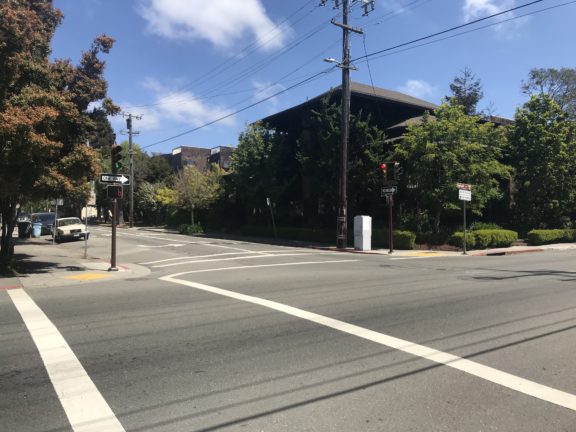According to both Eric Dibner and Hale Zukas, the corner of Dwight and Dana was a site of DIY curb cuts.
In our post-ADA world, many take curb ramps on street corners for granted. Meanwhile, in the early 1970s, disability advocates interested in removing architectural barriers took matters into their own hands, experimenting with less visible forms of protest that enabled people using wheelchairs to literally be seen by the community.
The city of Berkeley didn’t pass their curb cut resolution until February 1973. Before then, wheelchair users and allies evaded lengthy bureaucratic processes by materializing crude curb ramps on their own.
An excerpt from Hale’s oral history with Sharon Bonney follows:
Bonney: There’s a rumor that goes around that you and Eric Dibner, sometime during this time period, used to go out late at night and lay asphalt down for curb ramps around the city of Berkeley. Can you tell me about that? Did you in fact go out in the dark of night and do that?
Zukas: Actually, I heard Linda Rosen of the exhibit on the disability movement in Berkeley, which she organized for the Berkeley Historical Society, talk about this at the opening, and Ed Roberts’ attendants were doing that.
Bonney: Oh, so you were not ever involved in doing that?
Zukas: I may have been responsible for one.
Bonney: Where is that one?
Zukas: At Dwight and Dana.
Bonney: Do you know if Eric Dibner used to go out in the dark of night and do this?
Zukas: Linda Rosen said he was responsible for one or two.
Bonney: But you don’t know from first-hand experience?
Zukas: No.
